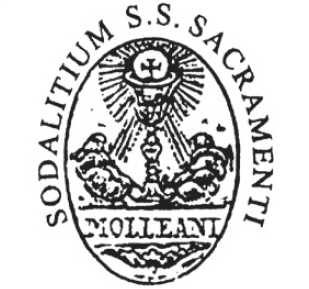The Confraternità della Croce e Sacramento was a confraternity founded at the end of 15th century in the city of Senigallia. Senigallia is a sea-side town on the central-east coast of Italy. Originally, the Confraternità della Croce e Sacramento used a small stone church outside the city walls. This small church was built in 1520; however, the Brotherhood felt distanced from city and in the late 1560s the brother started to build a new church within the city walls near the Cathedral of St. Peter. In 1576, masses were being held within this church. On February 3, 1578 Federico Barocci entered into a contract negotiations for a commission for an altarpiece. The painting began in May of 1852, according to the Brotherhood’s records. Before Barocci’s altarpiece the only decoration in this church was a representation of the Brotherhood’s impresa, or their symbolic insignia; which was a representation of the Eucharist.
All records suggest Barocci had a large influence on the size and placement of this altarpiece. He placed it within a tall-vertical arch. This helps emphasizes the depth within the painting. Later, this altarpiece would be known as the Entombment. Barroci depicts Christ being taken down from the cross and carried towards his tomb. Labors are struggling to wrap his body as Mary Magdalene kneels in front of the body of Christ praying; modeling the appropriate behavior for the congregation viewing this altarpiece. A group of women are seen in the foreground. In the background, there are three crosses high up on a hill side. Directly opposite of those crosses is a 16th century castle. However, the real focus of this painting, are the three crosses up on the cliff. Especially, the middle cross, which would mirror an actual cross that would hang over the altar; this would create a visual vertical axis for the congregation’s eyes would follow down to the altar where the Eucharist would be laid out. So while, the Brotherhood was essentially changing the focus of their decoration, Barocci would refocus it again by playing with the relationship between the altarpiece, the actual cross in the church and the altar and Eucharist.

 Barocci, Entombment, 1579-1582, Senigallia, Santa Croce
Barocci, Entombment, 1579-1582, Senigallia, Santa CroceSources:
Lingo, Stuart. Federico Barocci: Allure and Devotion in Late Renaissance Painting. (New Haven: Yale University Press, 2008) 63-66

Beautiful.
ReplyDeleteIt really helps seeing the painting in context. It adds a lot of depth that I wouldn't notice with just the painting itself.
ReplyDelete